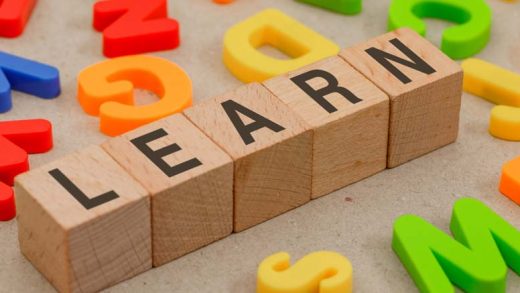Kids have problems learning letter sounds and words when they don’t know what to call the letters. Before kids can understand and use the alphabetic concept they should have alphabet recognition and name a few letters. If a child doesn’t know much about the alphabet when they start school, they will need lessons. It will help them recognise, name, and write letters. Kids can start learning letter sounds and spellings after recognising and naming letters.
It looks like kids learn the alphabet in a particular order. The letters’ names come first, then letter shapes, and finally letter sounds. Words that start with each letter are taught through songs and rhymes. It helps them learn the shapes of letters while they play with blocks and alphabet books. Children should be able to learn to recognise, name, and write both uppercase and lowercase versions of each letter. So let us learn what the alphabetic principle is.
What is the Alphabetic Principle?
Connecting letters with their sounds to read and write is the “alphabetic principle.” For example, a young kid showing the alphabetic principle would be aware that the written letter “m” produces the sound /mmm/.
Letters in words tell us how to correctly “sound out” (i.e., read) and write words. Readers need to be good at phonological awareness. They should be able to identify different sounds in spoken words to fully understand the alphabetic principle. When alphabet recognition comes automatically, learning to read and write is much simpler.
The alphabetic principle has two parts:
- Alphabetic understanding is the knowledge that words have letters that represent speech sounds.
- Phonological recoding is the ability to read and pronounce words by translating the letters into the sounds they make.
The alphabetic principle is important for reading and understanding text. Children learn to use the alphabetic principle fluently throughout normal reading development. This makes it possible for them to concentrate on getting the text’s meaning. It is the main goal of reading.
Learning and applying the alphabetic principle takes time and can be hard for most children. Most of the words used in print may be produced by learning the sounds of a large number of letters in various letter arrangements.
Now let us see some Alphabetic Principle examples. Depending on the word, a single English letter might stand for many sounds. For example, the /a/ sounds in the words “mat” and “mate” are different). But, the /a/ sound in Spanish, which has the vowel “a” in its alphabet as well, is always pronounced in the same manner. It is regardless of the word it appears in (for example, the /a/ in “casa”).
Irregular Words
Some words, called irregular words, cannot be read correctly using the alphabetic principle to “sound them out”. One example is the words “was,” “is,” and “know” are not accurately pronounced using phonics rules. Teaching students to read irregular words requires a different method than teaching them words with a letter-sound structure based on rules.
Even though some words are irregular, it is still much better to learn the alphabetic principle. Kids should apply it when reading new words instead of trying to memorise every word. And, then guessing what the word might be based on its first letter and the words that come before or after it in the text.
Explicit Phonics Instruction
Most kids learn what is the alphabetic principle with plenty of practice and explicit phonics instruction. It teaches them how the principle works step-by-step. Here are some useful methods for teaching the alphabetic principle with examples.
- Connect Letters To Their Most Common Sound –
- Read Words Using What They Know About The Sounds That Letters Make –
- Begin Reading Texts That Contain A High Percentage Of Decodable Words –
Depending on the other letters in the word, each of the 26 letters in the English language produces at least one common sound. For example, the word “mat” has three letters that each produce their typical sound. The letters “m” and “t” in the word “meat” sound the same as they do in the word “mat,”. The letter combination “ea” gives its most common sound when these letters are combined to form a word. Despite there being two letters in the word “meat,” the letter “ea” only has one sound.
Students “blend” the sounds made from letters into a full word by using the alphabetic principle. For example, the word “mat” is created by blending the sounds /m/ /a/ /t/ produced by the letters “m,” “a,” and “t.” Before moving on to more hard word patterns that follow other important phonics principles, students should start learning to read by making the component sounds in words. They should then blend the sounds to make the whole word. They can begin with simple CVC words (consonant-vowel-consonant).
Young readers can start with simple books that have words they can read on their own. They can follow the rules of the alphabetic principle to do this. A large part of the words in these texts follow standard alphabetic principles. By reading these books by themselves, students may improve their fluency in reading. They can become better at concentrating on the text’s meaning. Many common words, such as “was,” “said,” and “of,” are irregular words. They don’t follow the common alphabetic principle rules. Early learning in the most common irregular terms will let kids read more engaging texts. These texts are still decodable.
All alphabetic languages may be taught using phonics and the alphabetic principle to guide instruction.
So, now you know what the alphabetic principle is and its examples. The alphabetic principle links sounds to letters. It helps the development of effective reading and writing abilities. It is important to understand the growth of education. Accepting this idea helps kids learn languages early and sets them up for success in school. Kids learn the idea naturally with exercises that use letter-sound connections and phonics. Kangaroo Kids International Preschool provides engaging programmes that are customised to meet the needs of each child to develop this important ability. They also inspire a love for learning. Using this idea gives kids the ability to become good, confident readers and writers.









